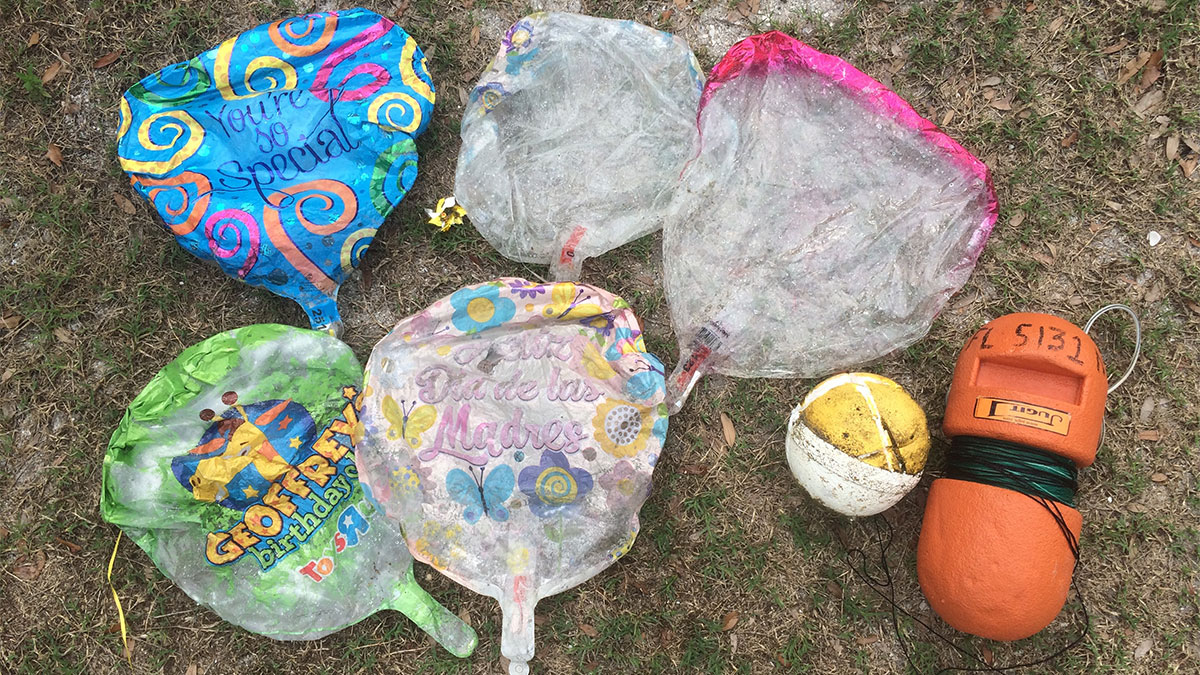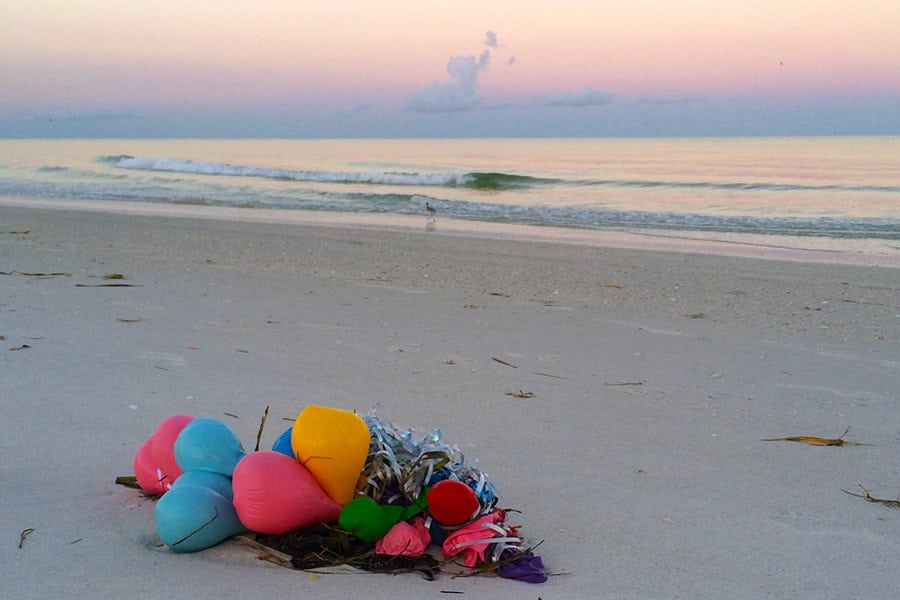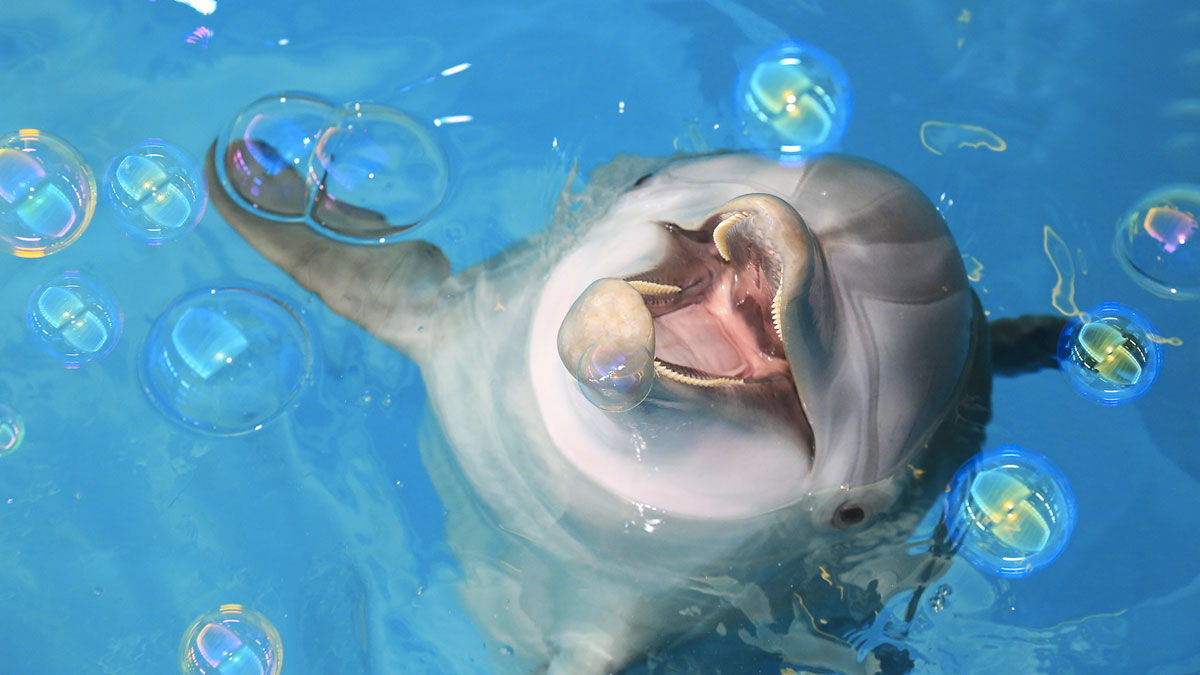Up, Up & Away … but Where To?
When you’re preparing to celebrate a loved one’s birthday or maybe an anniversary, it would be wise to leave balloons off the shopping list. The colorful excitement that balloons entail can easily be replaced by something as simple as bubbles or flowers. This simple change can make a huge impact on the environment. Balloons, along with plastic bottles and shopping bags, are among the top pollutants of the environment. The ocean, in particular, cannot seem to escape our plastic pollution problem. National Geographic even reported that a plastic bag was found at the bottom of the ocean’s deepest trench.

Once a helium balloon is released into the air, the excitement of watching it float into the sky soon turns alarming. Essentially, releasing balloons is littering, because as we all know, what goes up, must come down. Often times the balloon will end up in the ocean where it is not biodegradable and can easily be mistaken for food by marine life. A deflated balloon with a string hanging off of it can resemble a jellyfish to a hungry sea turtle.
Balloon Found Inside a Rescued Sea Turtle
In March of 2017, Clearwater Marine Aquarium learned how harmful balloons are from a very small juvenile green sea turtle named Chex. Chex was initially found floating around Redington Pier and was then transported to Clearwater Marine Aquarium. Chex had a ribbon and an entire balloon in his digestive track. Thankfully, he eventually passed the plastic materials, and once they were passed he grew healthier and was eligible for release. Chex was a lucky sea turtle, but balloons are harming countless marine animals by entangling the creatures and blocking their digestive tracts.

Balloons are not only harming sea turtles, but they are harming all marine life and affecting the entire food chain, which eventually impacts the lives of humans. Marine animals are in a fight for their life against our pollution. Next time you’re thinking about celebrating, try some of these environmentally-friendly replacements for balloons!
7 Ocean-Friendly Alternatives to Balloons You Can Try
- Flags
- Banners
- Streamers
- Kites
- Pinwheels
- Floating flowers
- Bubbles

Learn about our Healthy Habitats and Oceans program.
Learn more ways you can help protect marine life!
All marine turtle footage taken in Florida was obtained with the approval of the U.S. Fish and Wildlife Service and the Florida Fish and Wildlife Conservation Commission (FWC) under conditions not harmful to marine turtles. Footage was acquired while conducting authorized conservation activities pursuant to FWC MTP-17-172.